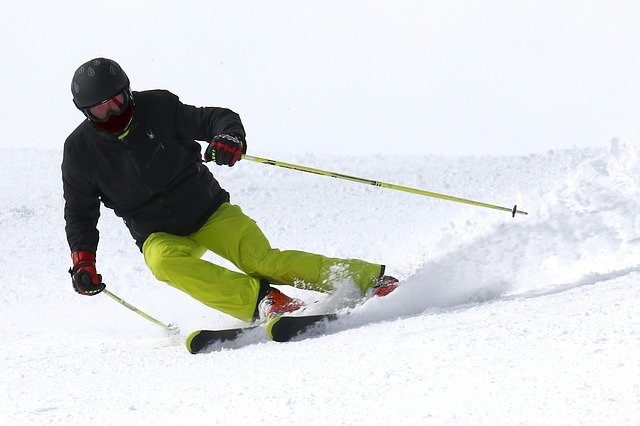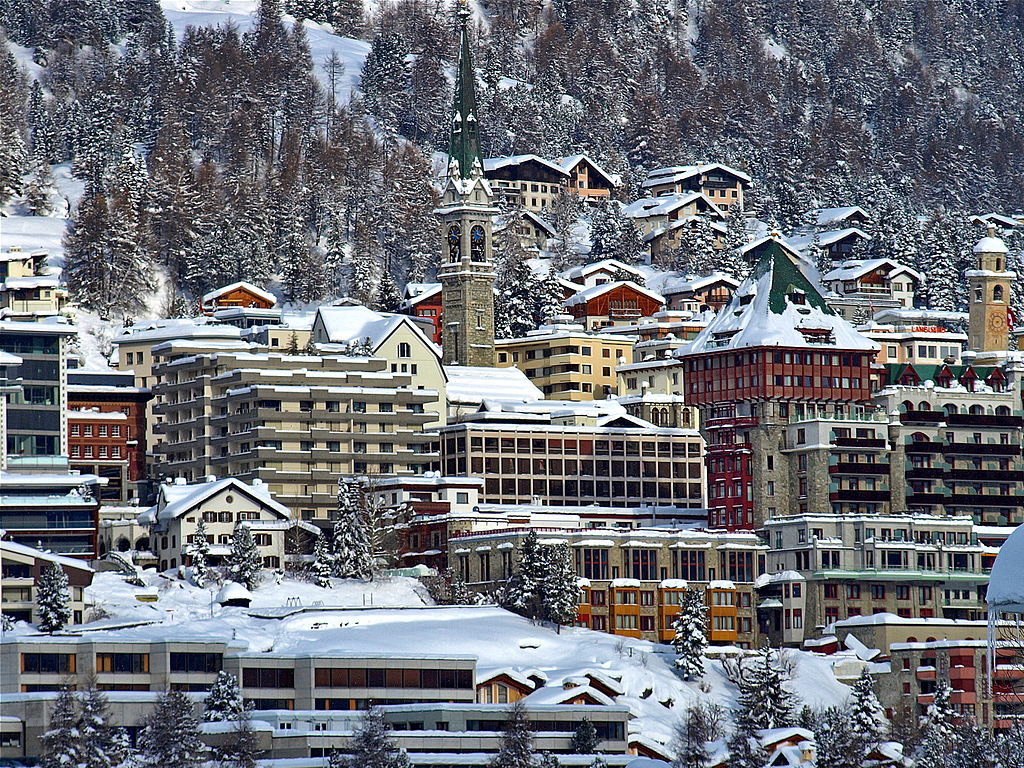English Across the Curriculum
Skiing
Alpine Skiing
Alpine skiing is skiing down a hill. The word comes from the Alps, the highest mountains in Europe, where downhill skiing started. Beginners slide down gentle slopes and keep the front tips of their skis together. This is called a snow plough. When you get better, you ski parallel and keep your ankles together.
For many years skis were made out of wood. Today modern carvers are made of a combination of different materials. They have metal edges and are broader at the ends so that you can turn more easily. Generally, better skiers use longer skis because they keep steady at higher speeds. Safety bindings help prevent leg injuries. They separate you from the skis when you fall down.

Parallel skiing
Image: Josef Pichler via Pixabay
The first boots were made out of leather. Today they have two parts. The outer shell is hard and gives skiers more protection, the inner boot is made up of foam or other materials and keeps your feet warm. Two ski poles are used to help you keep your balance.
Alpine skiing is a very popular form of recreation in many countries. Millions enjoy it in the USA, Canada, many European countries and Japan.
There are thousands of ski areas all over the world. In America, Colorado is the most popular state for skiing with famous resorts like Vail and Aspen. Europe has some of the most luxurious and famous skiing areas including St. Moritz (Switzerland), Val d’Isere (France), Garmisch-Partenkirchen (Germany) , Kitzbühel and the Arlberg (Austria) and Sestriere (Italy).

St. Moritz, Switzerland
Matviey, CC BY-SA 3.0, via Wikimedia Commons
Skiing resorts in the Alps
Image (altered): original image: Lencerborder enhancment & cities: Pechristener, CC BY-SA 3.0,
via Wikimedia Commons
